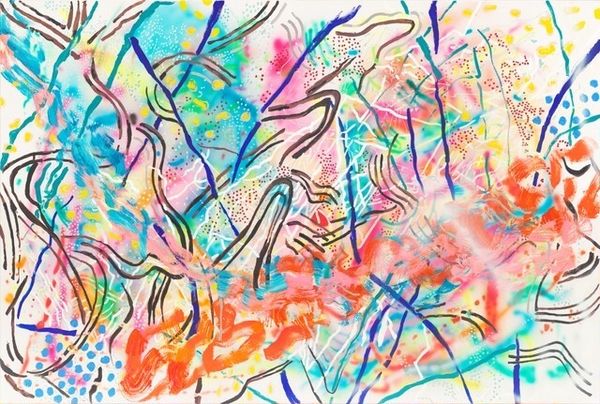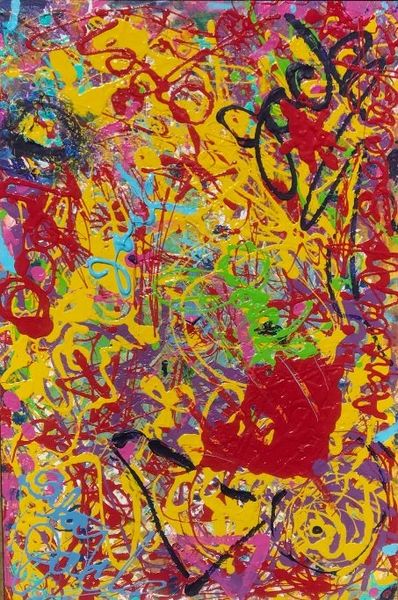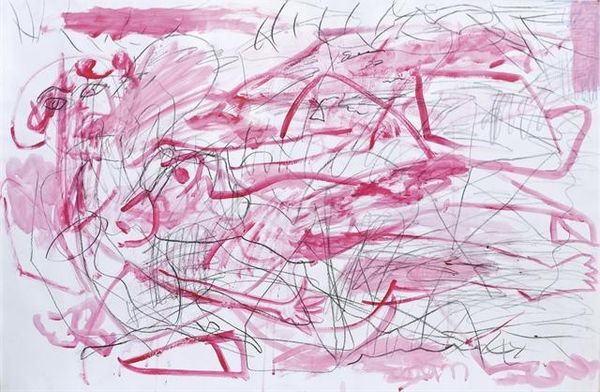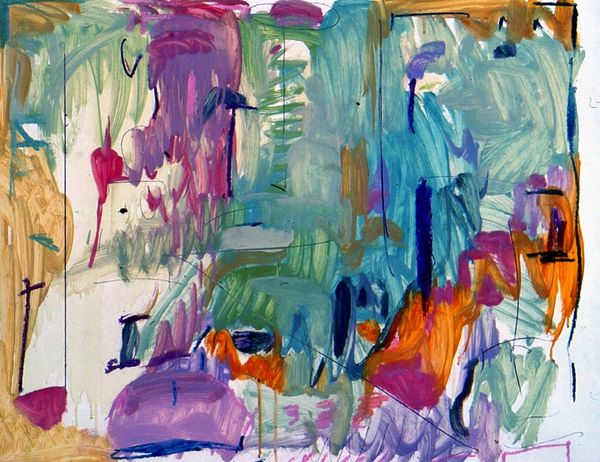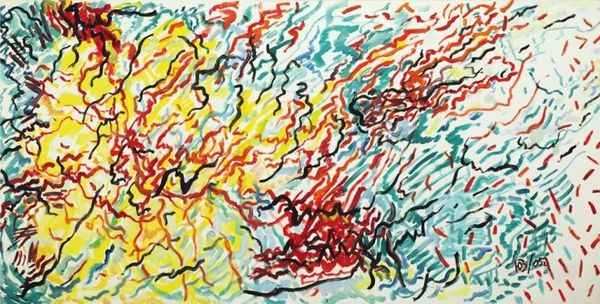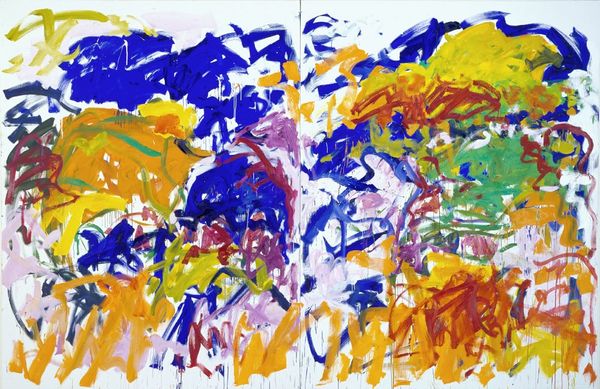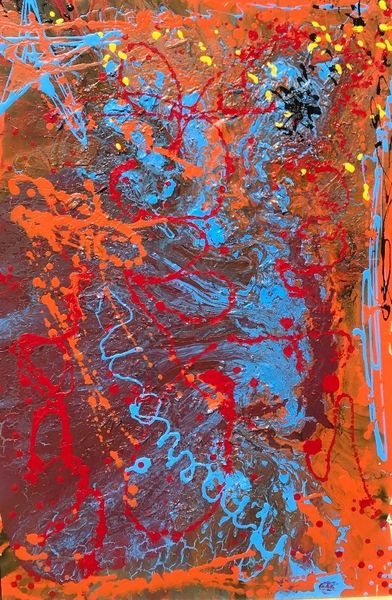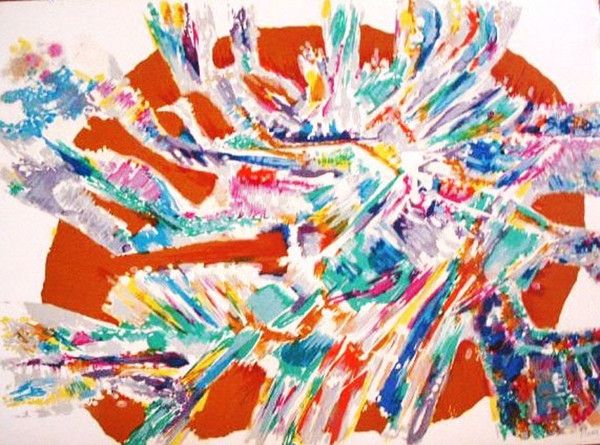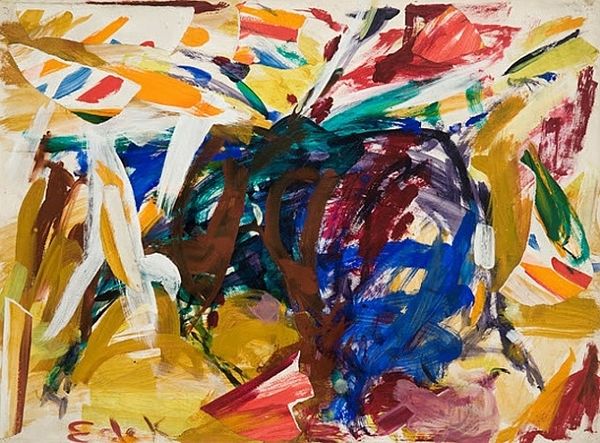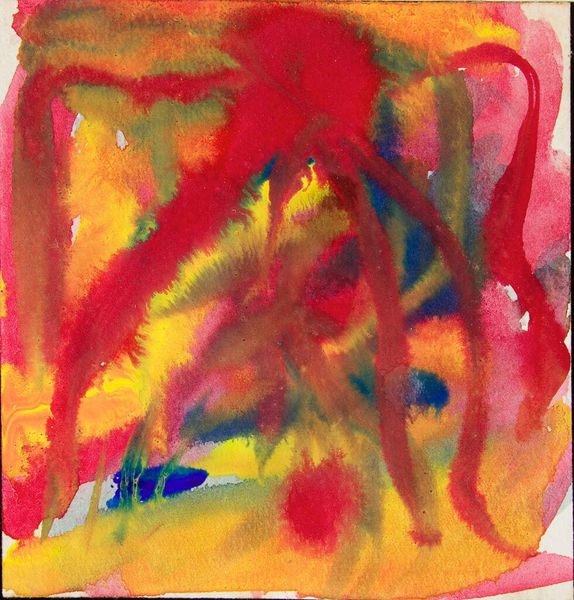
acrylic-paint, gestural-painting
#
abstract-expressionism
#
abstract expressionism
#
acrylic-paint
#
gestural-painting
Copyright: Elaine de Kooning,Fair Use
Curator: Today, we'll be examining a dynamic untitled piece by Elaine de Kooning, completed in 1965 using acrylic paint in a gestural style typical of abstract expressionism. Editor: My initial reaction is a kind of ecstatic bewilderment. It's a riot of color and jagged lines; almost violently cheerful. The pink background really pops, clashing delightfully with the yellows and blues. Curator: Indeed. Note how de Kooning harnesses color relationships, setting the pink—almost a saccharine backdrop—against dissonant primary hues. This is not merely random expression, but a carefully calibrated visual architecture. Consider the dynamic interplay of line, how these directional strokes generate an assertive tension throughout the composition. Editor: It feels…liberated, especially coming from a female artist working in a predominantly male art world at that time. It almost reads like a rejection of polite, feminine aesthetics. Was she making a deliberate statement about artistic freedom and breaking gendered expectations? Curator: That's certainly a valid interpretation, framing the work through a lens of feminist art history. However, focusing on the pictorial elements themselves, we see that the tension, that dynamic release, is generated from within the formal structure itself. The sweeping gestures are punctuated by sharp diagonals, effectively constructing a powerful, if somewhat chaotic, sense of space. Editor: I agree there's an internal logic, but that logic, for me, echoes the sociopolitical climate of the mid-60s—the era of counter-culture movements, and seismic shifts in cultural norms. Is this joyful violence, perhaps, an unconscious echo of broader social upheavals finding its outlet through De Kooning’s gestural approach? Curator: The strength of this piece, I believe, lies in its potent self-referentiality. It invites the viewer to witness painting in action, to consider the fundamental elements that create meaning and sensation on a two-dimensional surface. Editor: Ultimately, this work makes me reconsider the relationship between abstract art and its context, prompting an awareness that what appears spontaneous and chaotic is very often carefully wrought and deeply resonant of its moment in time. Curator: Yes, a superb encapsulation that mirrors my own. By examining its intrinsic formal characteristics and broader historical narratives, we better recognize what brings power and longevity to a painting that encapsulates freedom of expression.
Comments
No comments
Be the first to comment and join the conversation on the ultimate creative platform.
